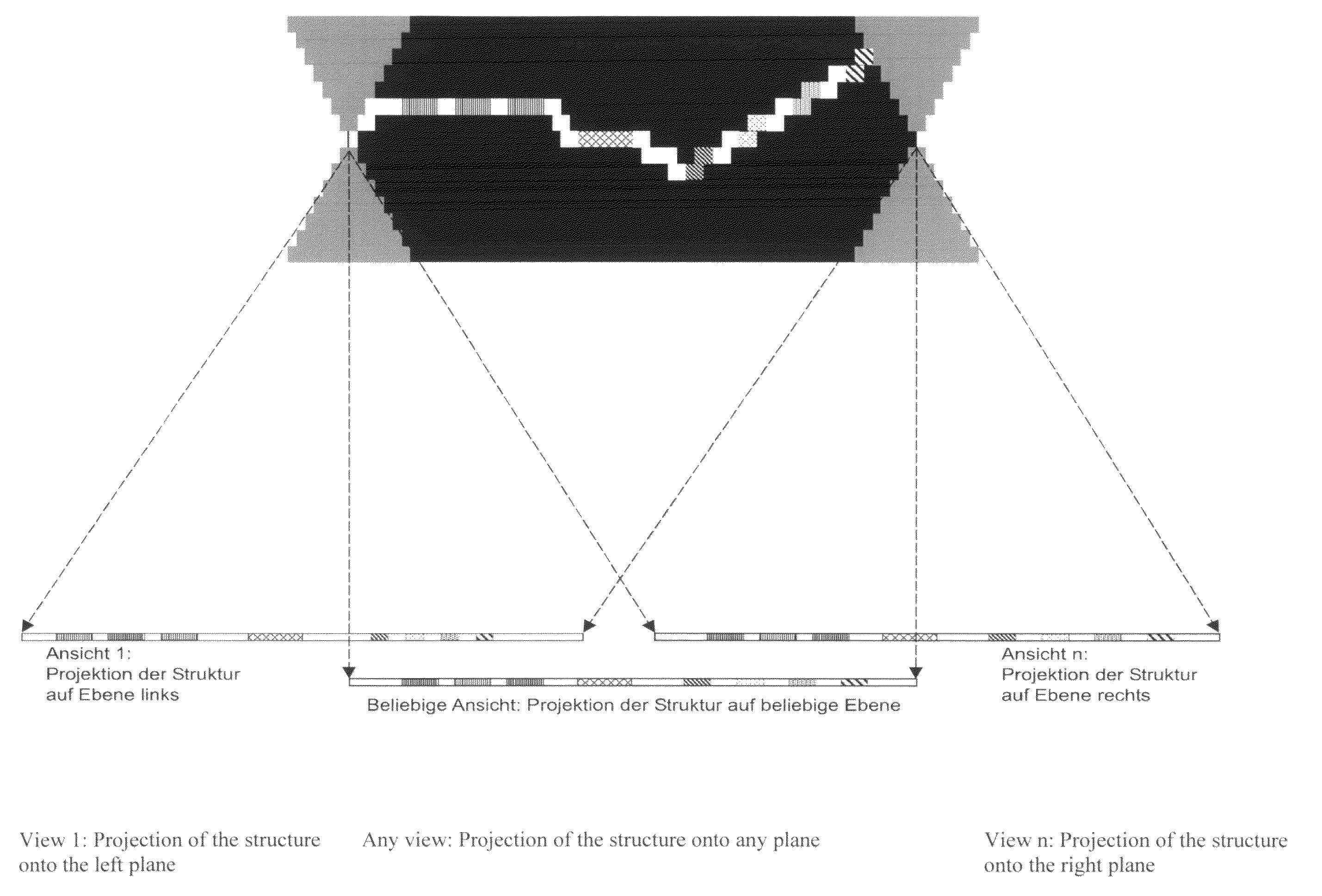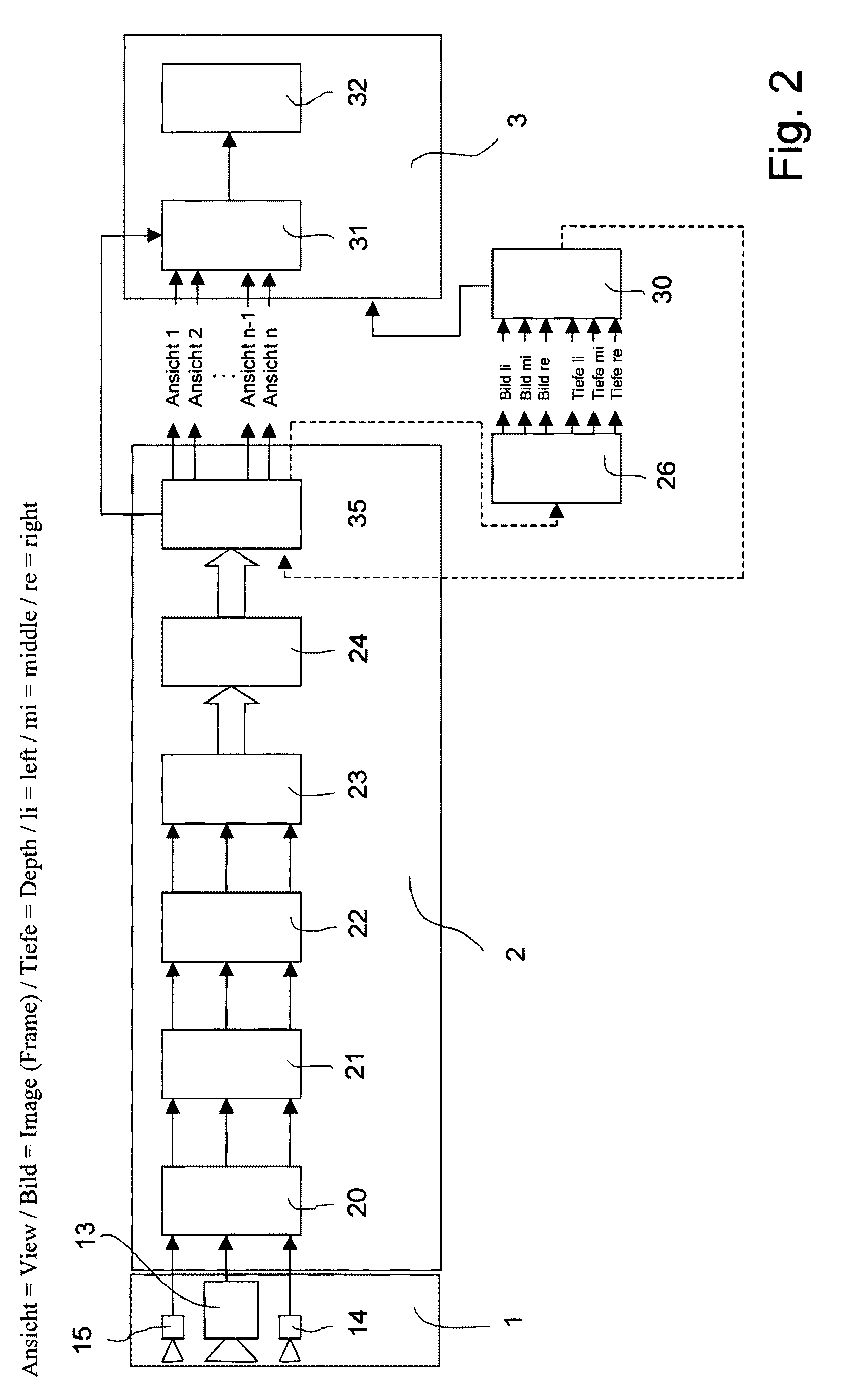Arrangement and method for the recording and display of images of a scene and/or an object
a technology applied in the field of arrangement and method for recording and displaying images of scenes and/or objects, can solve the problems of large implementation effort, increased cost of using several cameras, and often not very precise sensors, etc., and achieve the effect of facilitating fixing
- Summary
- Abstract
- Description
- Claims
- Application Information
AI Technical Summary
Benefits of technology
Problems solved by technology
Method used
Image
Examples
Embodiment Construction
[0048]An arrangement according to the invention essentially consists of a stereocamera system 1, an image conversion device 2 and a 3D image display device 3. As shown in FIG. 1, the stereocamera system 1 contains a right camera 11 and a left camera 12, the image conversion device 2 contains a rectification unit 21, a color adjustment nit 22, a unit for establishing the stack structure 23, a unit for the optimization of the stack structure 24, and a unit 25 for the projection of the stack structure onto the desired view, and the 3D image display device 3 contains an image combination unit 31 and a 3D display 32, with the 3D display 32 displaying at least three views of a scene / of an object for spatial presentation. The 3D display 32 can also work on the basis of, say, 4, 5, 6, 7, 8, 9 or even more views. As an example, a 3D display 32 of model “Spatial View 19 inch” is eligible. FIG. 2 shows another arrangement according to the invention. Here, the 3D camera system 1 contains a main...
PUM
 Login to View More
Login to View More Abstract
Description
Claims
Application Information
 Login to View More
Login to View More - R&D
- Intellectual Property
- Life Sciences
- Materials
- Tech Scout
- Unparalleled Data Quality
- Higher Quality Content
- 60% Fewer Hallucinations
Browse by: Latest US Patents, China's latest patents, Technical Efficacy Thesaurus, Application Domain, Technology Topic, Popular Technical Reports.
© 2025 PatSnap. All rights reserved.Legal|Privacy policy|Modern Slavery Act Transparency Statement|Sitemap|About US| Contact US: help@patsnap.com



